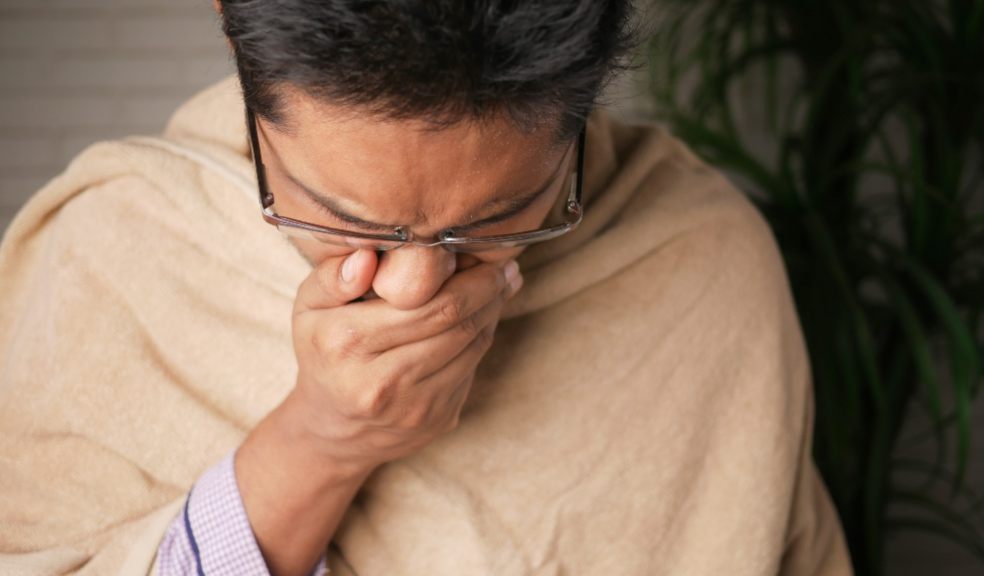
Sleep experts share their top tips for sleeping better with seasonal allergies
If you’ve recently found yourself reaching for the tissues more than usual recently, you’re not alone. The first ‘pollen bomb’ of the year has arrived and with that, many people are struggling with hay fever at the moment.
And given that hay fever can make it harder to fall asleep at night, the sleep experts at MattressNextDay have shared their top tips for overcoming a troubled slumber.
Sleep experts share their top tips for sleeping better with seasonal allergies.
Stack up your pillows, then take a selfie to check your head is in the right position.
The anatomy of your nose and throat means that while you’re horizontal, it’s harder for your body to let mucus and other nasty bodily fluids drip down. You’ll also find it harder to breathe, as your nose will stay blocked and it’ll be harder to clear your airways than when you’re upright. This is why you should try to raise your head so try layering your pillows higher than normal to keep your head elevated.
To see if you have the right size pillow, you should take a selfie of your face and torso while lying in your sleeping position. With the photo in front, draw a vertical line down the middle of your face, and then down the middle of your torso. If these don’t line up, your pillow isn’t high enough.
Use a hairdryer to remove pet hair and dust from under your bed.
As well as pollen, one of the main causes of an allergy reaction is dust. So, with that in mind, you need to keep on top of your dust around the other areas, which is where pet hair can lurk. I recommend that you dust every room in your house at least once a month. When it comes to your bedroom, you should aim to dust it every week. Make sure all windows are also open, so it creates a well-ventilated environment for the dust to escape.
Whilst many find cleaning under the bed to be a chore, it’s still an important one if you sleep with a pet as their hairs will collect underneath. To prevent this from happening, use your hairdryer to them from out from under the bed, so you can then hoover it up.
Take a hot shower to clear your sinuses.
Not only is a warm shower a great way to relax before bed but the steam of a hot shower may help thin out and drain the mucus in your sinuses, which makes it easier to breathe. To reap the full benefits, make sure the water is hot but comfortable. You could even take your steamy shower one step further by hanging a bag of lavender or peppermint around the showerhead to help add some essential oils to the steam, as this will help with your congestion.
Make a cup of tea but make sure you drink it at the right time.
A warm, steamy drink before bedtime can not only soothe your sore throat but it the steam will help loosen up your congestion. Peppermint tea has antibacterial and antiviral properties and has been proven to help clear sinuses. Or, alternatively, you can try some chamomile tea as it is known to help those who suffer from insomnia. Just make sure to drink your tea 60-90 minutes before you go to bed, so you don’t wake up in the middle of the night to go to the bathroom.
Keep yourself hydrated throughout the day to help eliminate mucus.
Another fluid you should drink lots of is water. Whilst you’re aware that staying hydrated has lots of health benefits, did you know that it can also help combat a stuffy nose at night? That’s because staying hydrated helps keep the mucus inside your nose thin and moist. Aim to drink at least two litres of water per day.
Eliminate pollen from your bedroom and body before bed.
If you’re a regular hay fever sufferer, it won’t be news to you that higher pollen counts mean higher chances of an allergic reaction. Keeping your doors and windows completely closed will help to prevent pollen from entering your home and bedroom. It might be tempting to have the windows open on a warm Spring day, but you’re simply inviting irritants inside.
Make your bedroom an anti-pollen zone, making sure the windows are kept always shut. Washing your bedding regularly will also help, and make sure to not wear clothes you’ve worn outside in the bed - this will simply transfer pollen and other allergens to your sheets.
Add an air purifier or humidifier to your room.
Sleeping with an air-purifying device can massively reduce allergy symptoms during the night.
Air purifiers remove dust and other particles from the air, removing the triggers of your allergies. Of course, the more expensive the purifier, the more effectively it’ll work, but even a budget-friendly option will remove some of the airborne contaminants from your sleeping environment.
A cool mist humidifier can also help relieve symptoms. Adding moisture into the air by emitting water vapour, humidifiers can help clear your airways and make it easier to breathe. Keeping these passages moisturised will prevent congestion and dryness.
You can even add some drops of essential oils, such as lavender oil, to emit a sleep-enhancing scent around your bedroom.
Tense your toes to reduce tension.
If you’ve had a few nights of bad sleep, chances are that you’ll be feeling more tense than usual. If this is the case, try alternately tensing and relaxing your toes for a count of 10 each time. Sleep experts at the University of Maryland found that this draws attention away from the rest of your body, and helps you relax more quickly.













